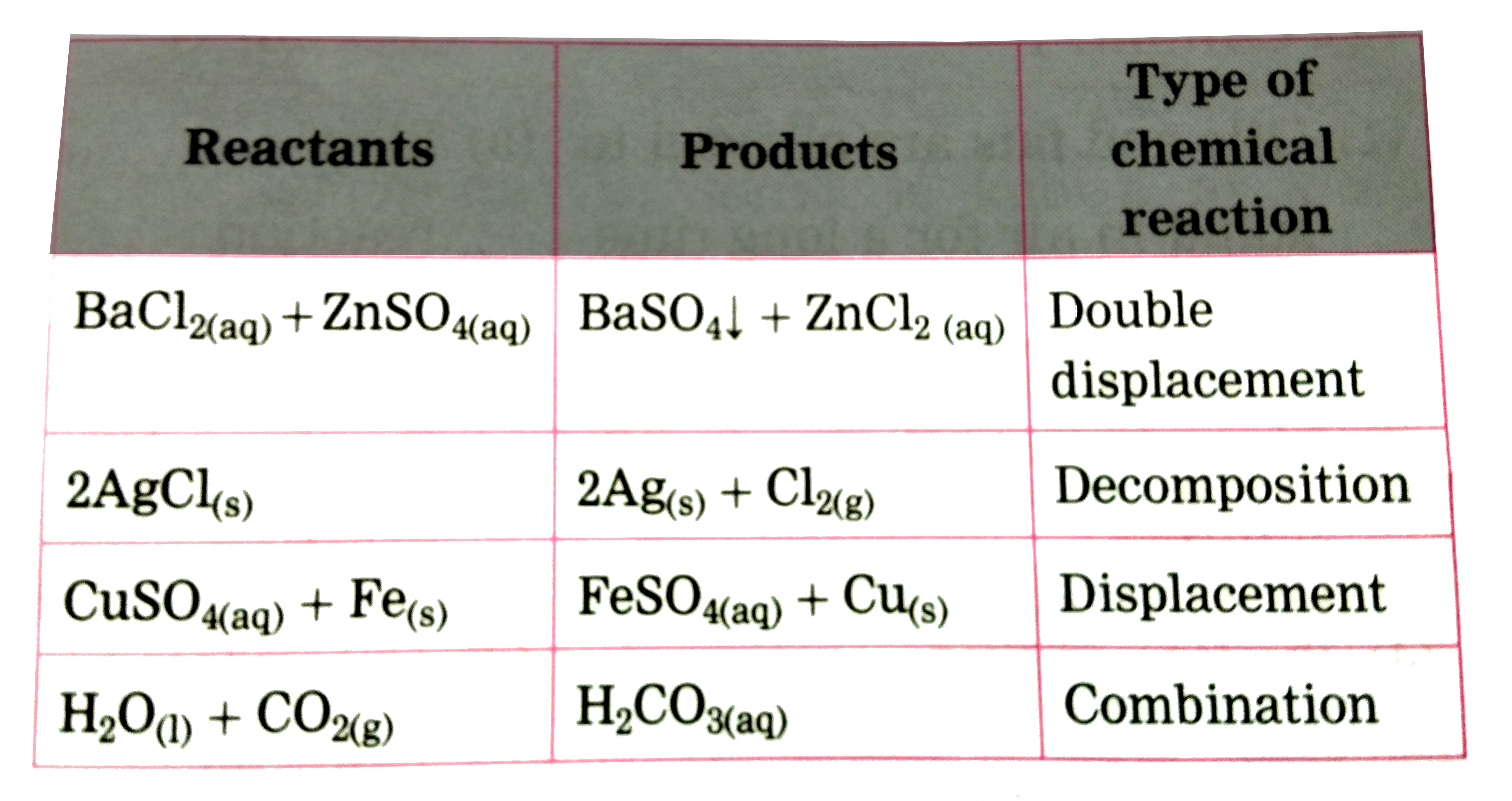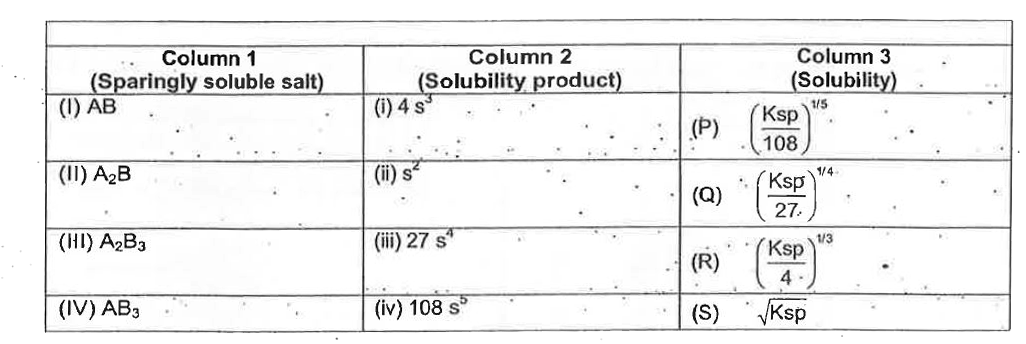Match the column in the following table :

Similar Questions
Knowledge Check
- Question 1 - Select One
Matching the information given in the three columns of the following table .
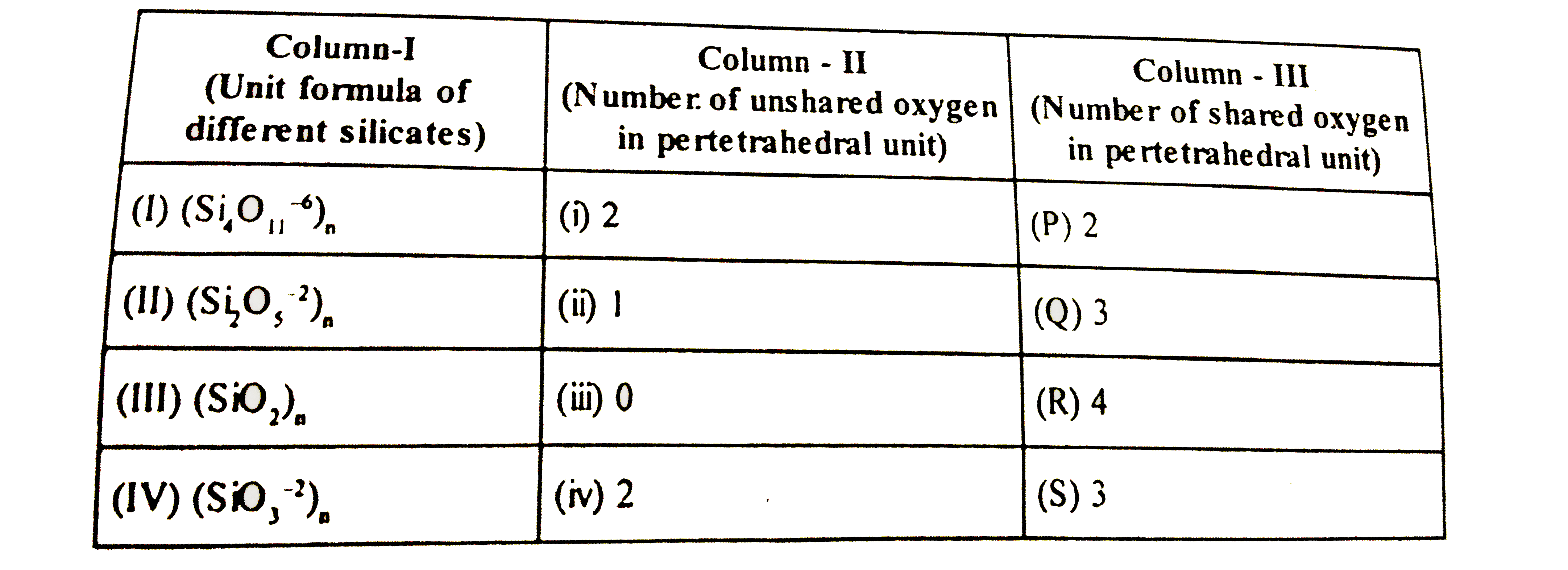
For the sheet silicate the only CORRECT combinatin is :-AII,I, (P)BII,(ii),(Q)C(IV),(ii),(R)D(III),(iii),(P) - Question 2 - Select One
Matching the information given in the three columns of the following table .

For 3D silicate (silica) the only CORRECT combination is :-A(II) ,(ii),(Q)B(III),(iv),(R)C(III),(iii),(R)D(III),(iv),(S) - Question 3 - Select One
Matching the information given in the three columns of the following table .
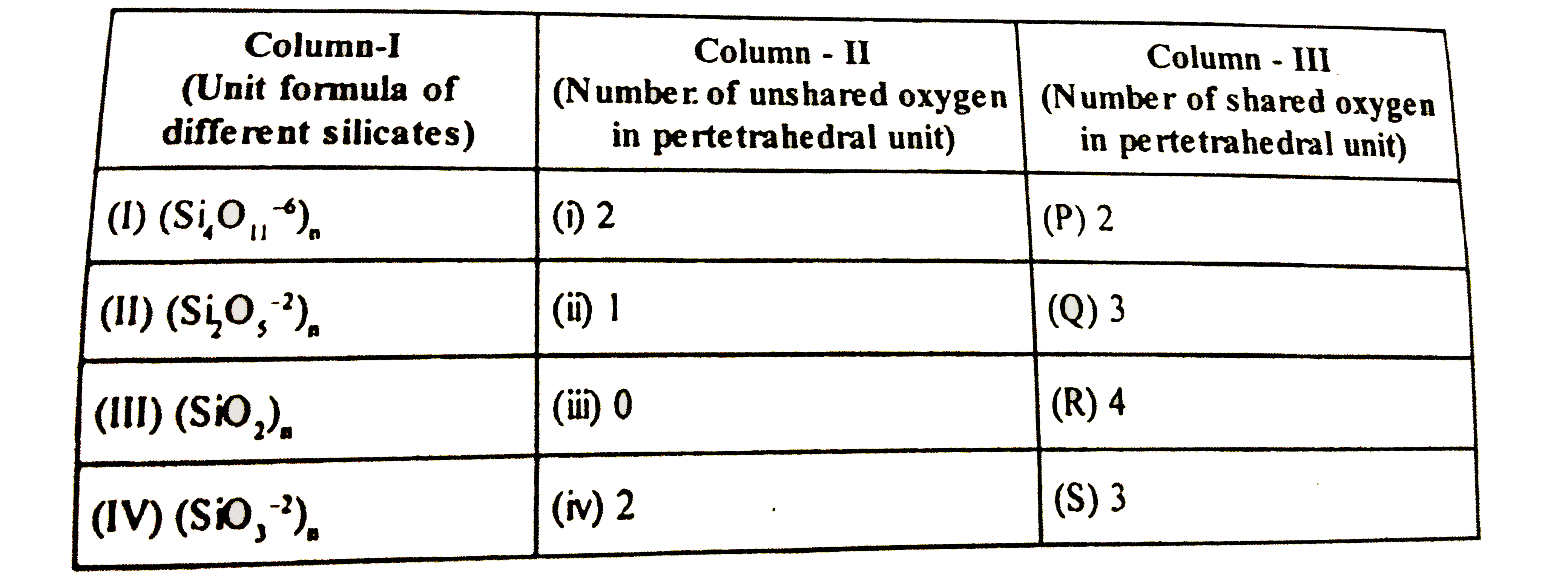
For single chain silicate the only CORRECT combination is :-A(I),(iii),(R)B(IV),(ii),(P)C(III),(ii),(Q)D(IV),(i),(P)
Answer questions 1, 2 and 3 by appropriately matching the information given in the three columns of the following table.
 View Solution
View SolutionAnswer 12, 13 and 14 by appropriately matching the information given in the three columns of the following table.
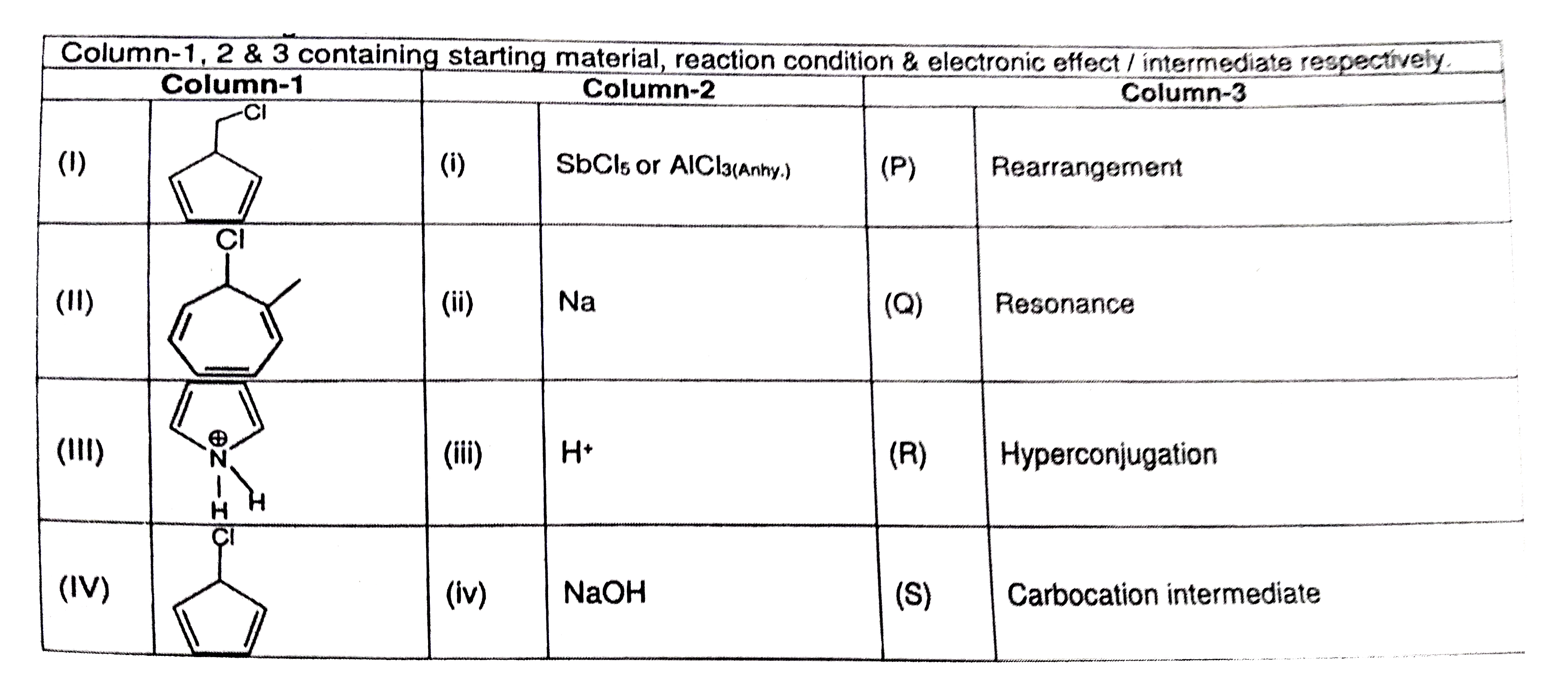
In which product formation is not possible ?View Solutionappropriately matching the information given in the three columns of the following table.
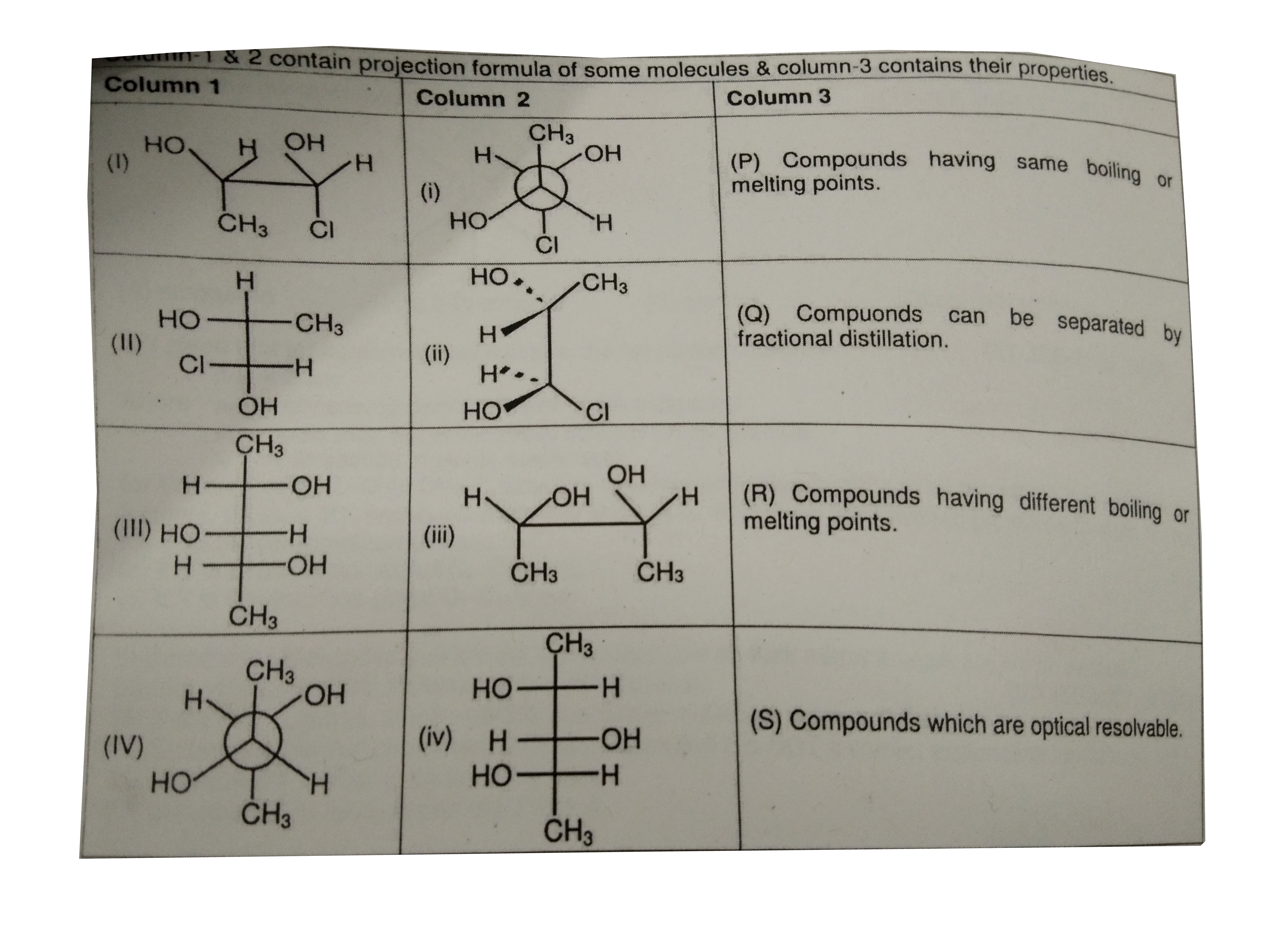
Which of the following combination gives correct information.View Solutionappropriately matching the information given in the three columns of the following table.
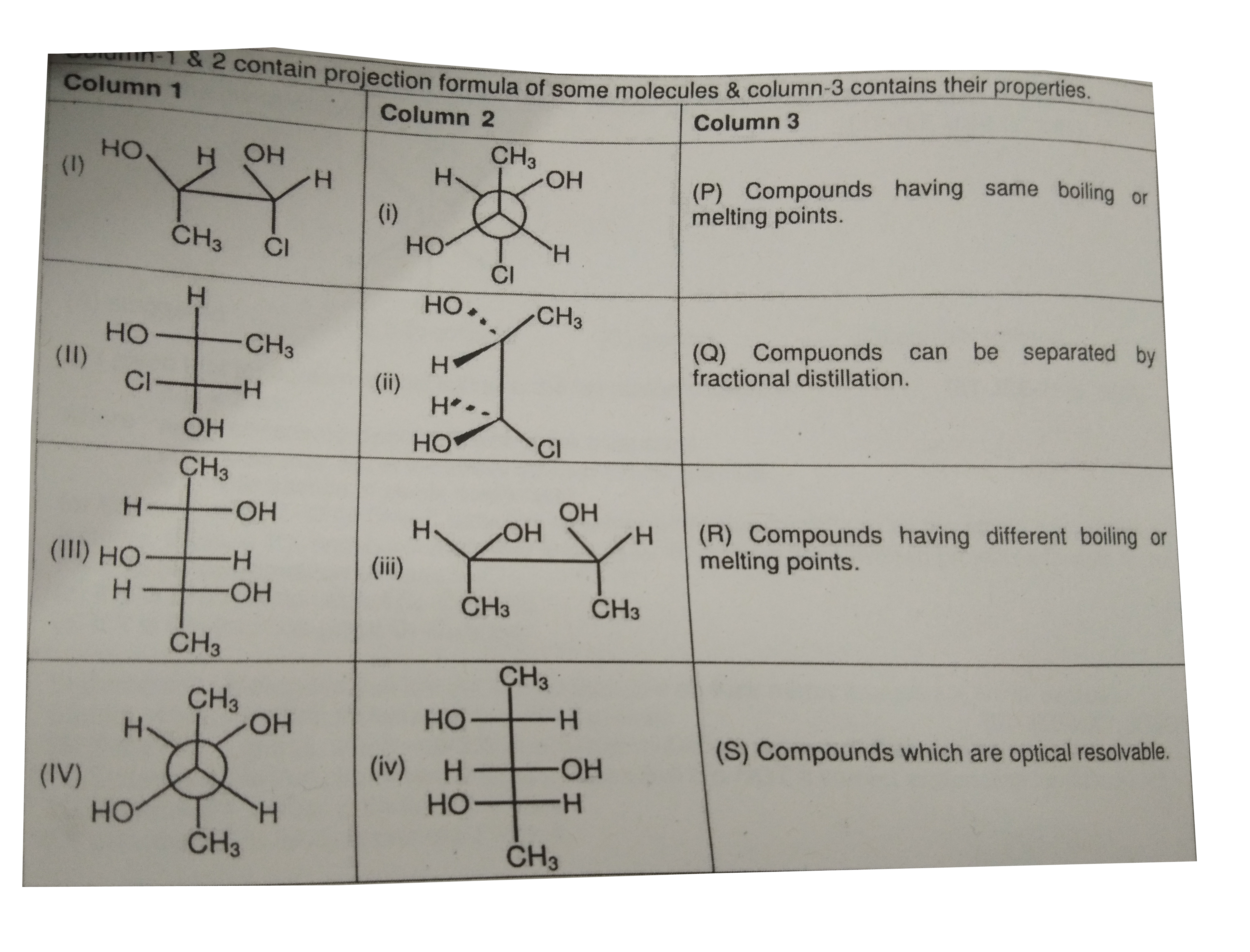
The correct combination that represents enantiomers with their correct properties.View Solutionappropriately matching the information given in the three columns of the following table.

The correct combination that represents diastereomers with their correct properties.View Solution


